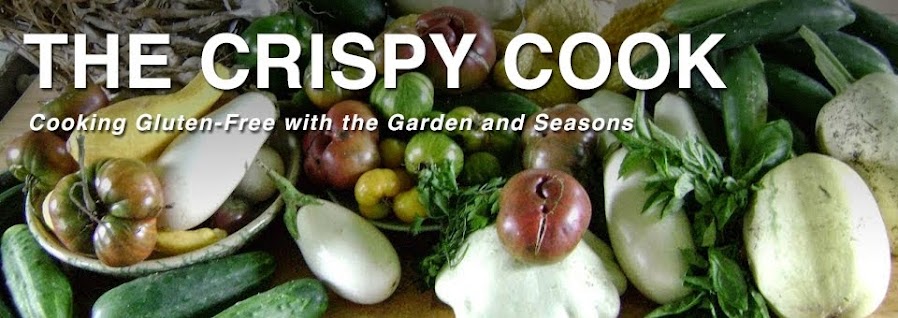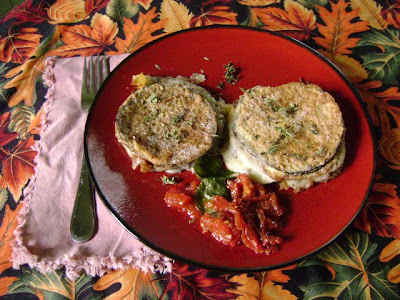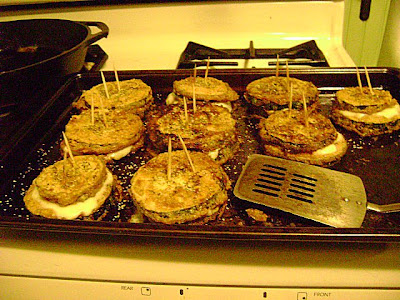With the Tiburon pepper, a dark green, glossy poblano variety, the rules were set on their ear. We got beautiful, sturdy plants with plenty of flowers and fruit, and they reached an unbelievable circumference of an inch or more at their stems. I had to put metal tomato cages around a couple of plants to hold them up when they started to tip over from their burden of fruit.

While the taste of these thin-walled peppers only had a mild kick, the oils from these peppers really made the skin on my hands burn so I used gloves after that experience and one time when I was chopping some up on a hot August night, I got a squirt of pepper juice on my forehead. I rubbed the offending juice off with a swipe of my hand and spread a burning ring of fire across my face that throbbed for the better part of an hour. So be forewarned! And use gloves. And maybe some eye protection if you don't wear eyeglasses like the Crispy Cook!

It's easy to preserve your Tiburon pepper harvest by dicing or slicing them up and slipping them into freezer bags. We also roasted some up and then froze them. They are too thin-skinned to peel, so I just roasted them whole in the oven, then pulled on the stem end to remove it and the seed core.

These gorgeous peppers were wonderful fried up with onions and garlic for omelettes and vegetable soups and stews and they kept on pumping out peppers through our abnormally long garden harvest season. They soldiered on through a light frost and didn't flag until we had a killing frost only a week and a half ago.
I'm sending this pepper post over to Weekend Herb Blogging, a weekly blog event started by Kalyn's Kitchen almost five years ago, and now headquartered by Haalo at Cook (Almost) Anything At Least Once. This week's host of WHB #257 is Almond Corner. She'll be putting up the WHB roundup after Sunday's deadline, so head on over there to see what other fantastic blog posts and recipes there will be featuring the edible members of the Vegetable Kingdom.







